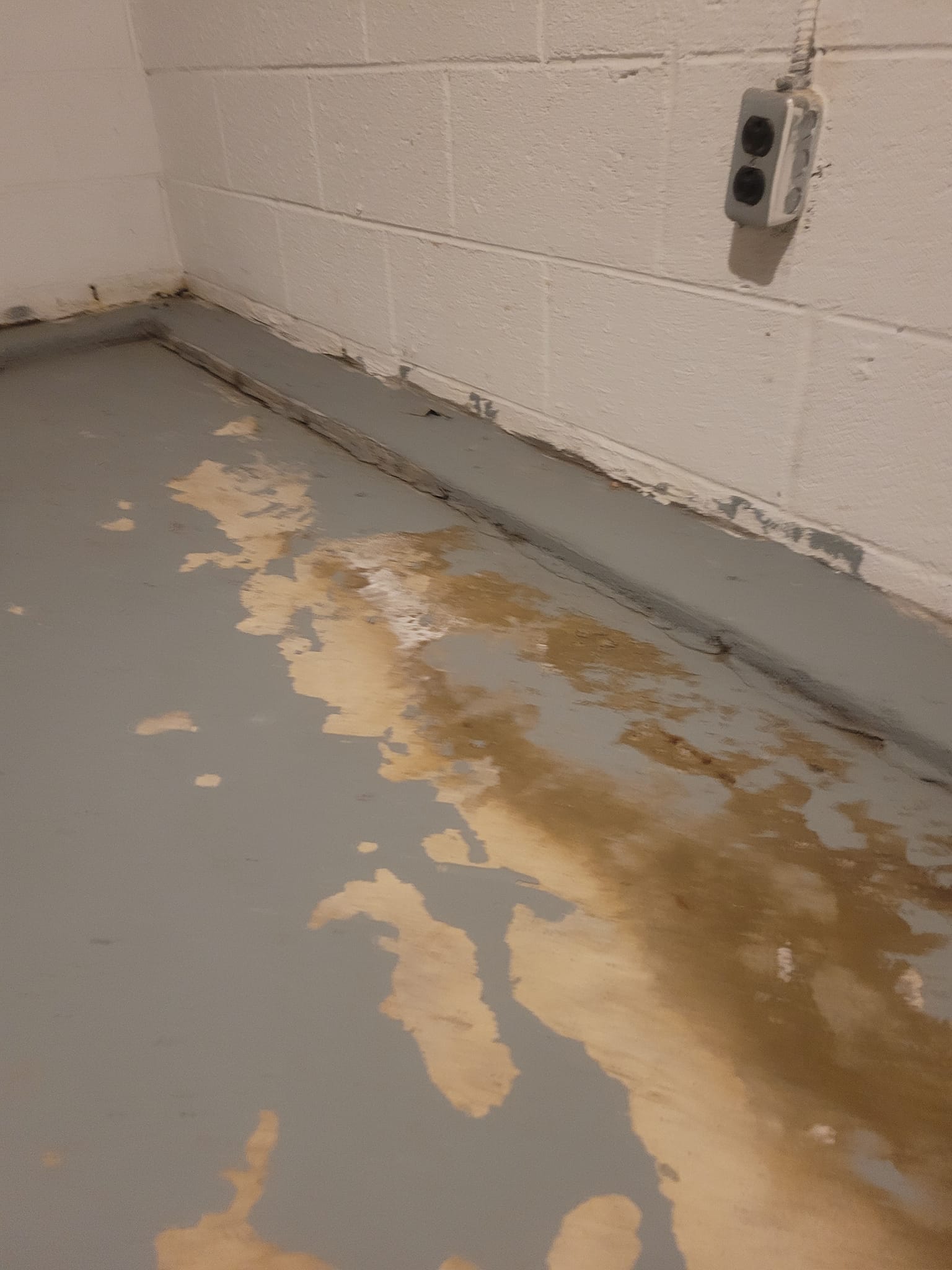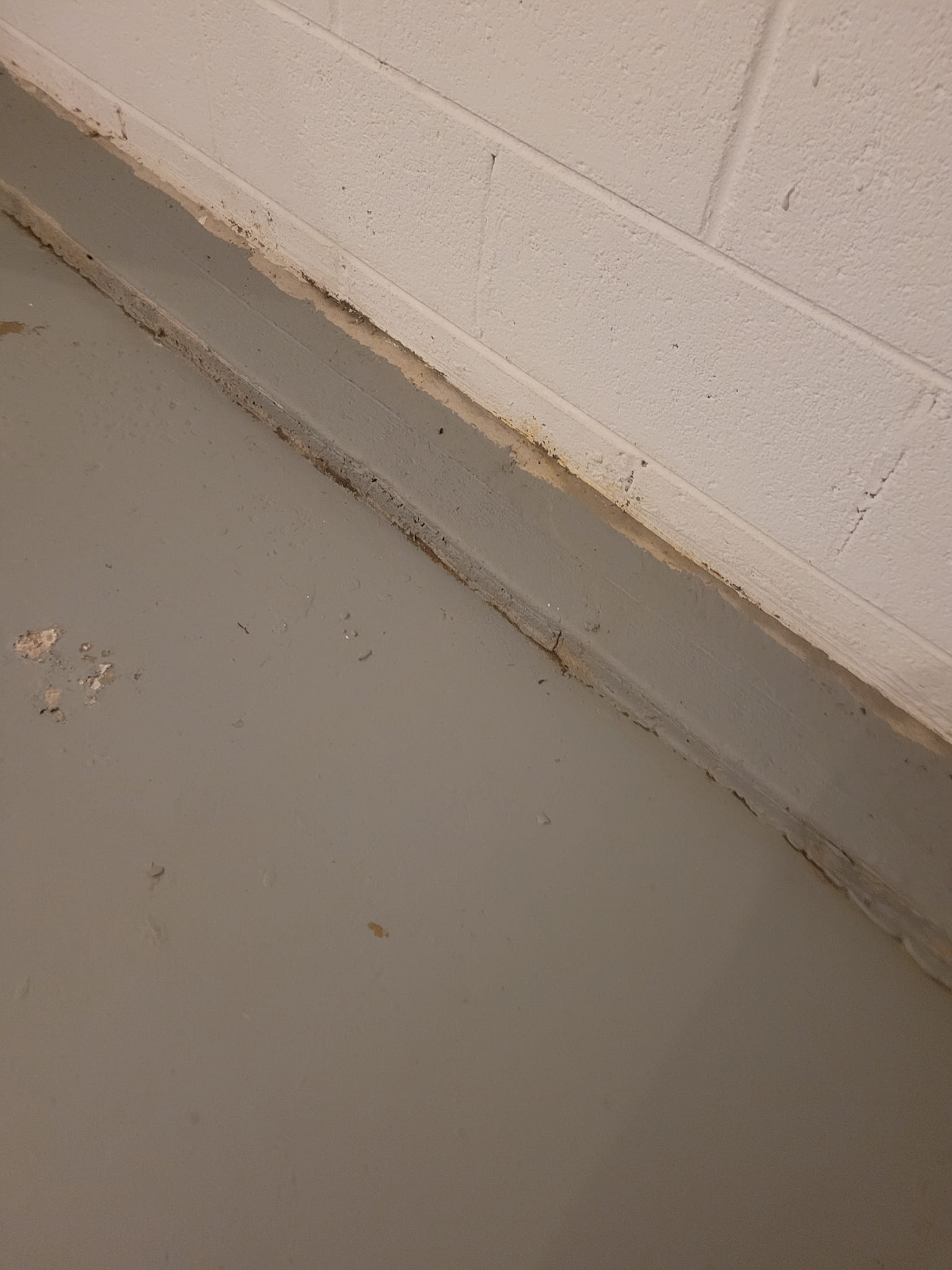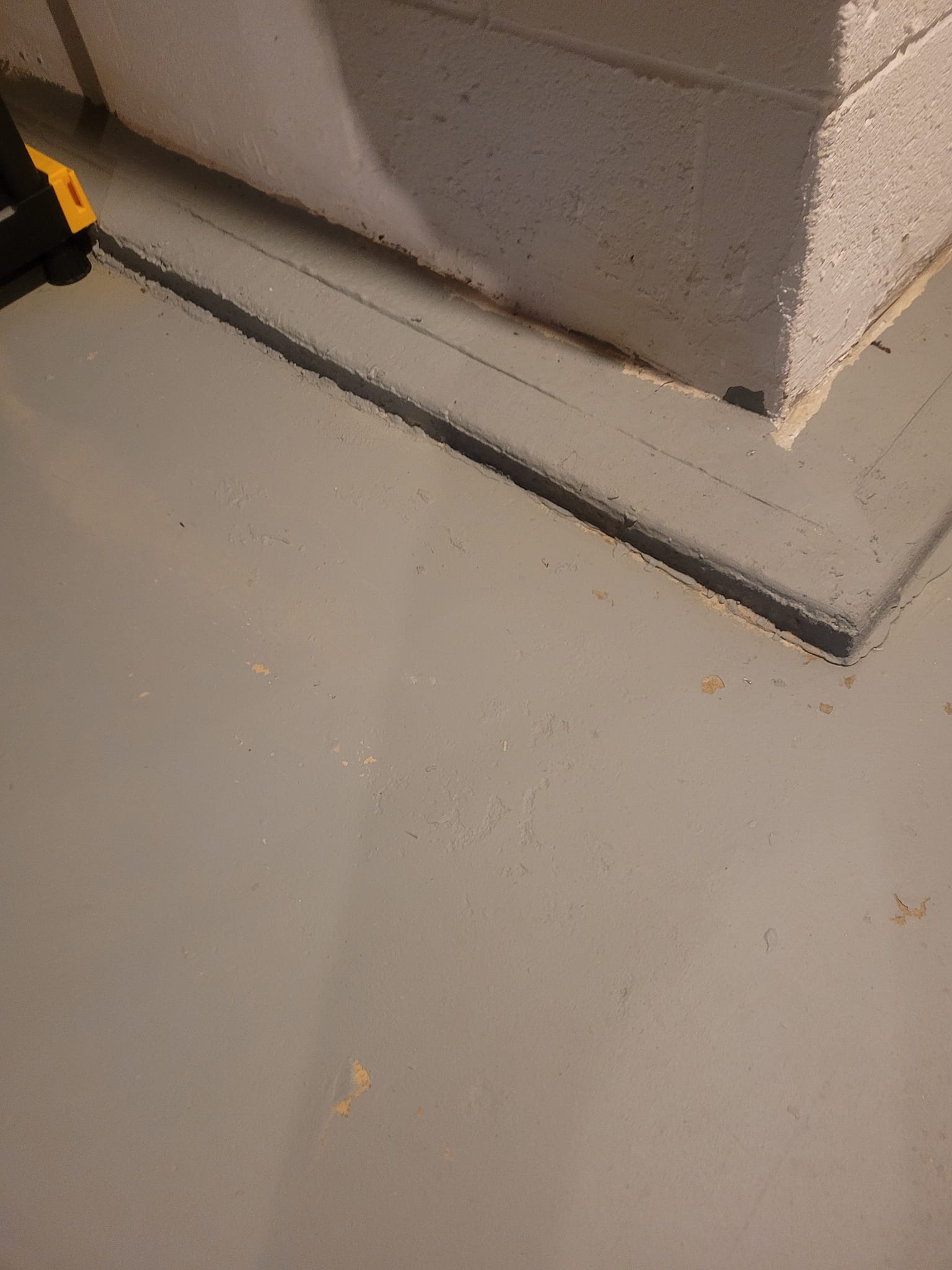What could this 12-inch high, 6-inch wide ledge be in my basement surrounding the perimeter, and what could be causing water issues underneath it?
8 months ago
Last Updated: October 21, 2024



That’s how they poured the footing for your foundation. I wouldn’t recommend using them for a French drain. You might want to consider other options.
My understanding is that when a basement is being finished, they start by doing the walls. The walls serve as the base for the footing/foundation. Once the walls are built and set, they pour the floor. The floor doesn’t align perfectly with the footing, which can be frustrating, but it’s not incorrect.
It’s pretty obvious that the curb was poured directly on top of the floor. If the water is seeping from beneath the curb, it was likely poured there in an effort to contain the water. Breaking a small section out could provide more insight into the situation.
You’re right, I think. It seems like it was added later, rather than being part of the original foundation. There seems to be a visible seam between the curb and the floor. Also, the concrete block foundation wall seems to extend down behind it, instead of sitting on top of it.
I was thinking the same thing too. I haven’t gotten a clear answer about what might be under there, but that’s where the water is coming in through the gaps in my basement. I do know that it’s not the foundation footing, as they never start a foundation with partial blocks like in the picture. A couple of experts who gave me estimates confirmed that. I’m hoping to find a drainage system under there so I can save money by just installing a sump pump with a pit. Thanks.
Michael, actually it’s the footer that needs to be wider than the block walls on it. Take a look at the blueprint from engineering.
Is a retired mason who knows a thing or two about footings. It’s pretty clear to me that this was poured on top of the floor.
I have a different perspective. It seems like there is a concrete footer for the block wall, with the slab floor poured below the height of the footer. This is quite common.
Oh no. Take a closer look at the edge of that curb and notice how the concrete seeped out from under the form and settled on the floor.
Appears to have a chilly joint crack located between the footer and slab. As a retired home builder, I believe this is common in my region of the southeast.
If you open the image in a new window, you’ll get a better view and notice the same details I do.
Wait, so they actually started building the walls with only a quarter of a block in height? Take a closer look at the first row of blocks – they aren’t full blocks.
Foundation
Do you happen to have a sump pump? Was it installed after the building and floor were poured? It’s probably covered by a cap over a French drain, and if it’s wet, it might not be functioning properly.
No sump pump, but is there a basement drain in the recently purchased house?
Footer
The footer is typically wider than the block wall.
It’s like the base of your house, supporting all the walls.
So basically, the concrete block is positioned beneath the wall, not on top of it. The wall was built before the concrete block was poured. It’s a common DIY drainage solution where a French drain pipe is placed in a trench, covered with gravel, and then a slab is poured over it. If the French drain fails, water can leak under the slab.
Make sure to locate the source of any water leaks before working on your basement foundation. I had a situation where my septic line was broken, but I didn’t realize it until after spending money on fixing my gutters and installing a sump pump system. I even thought my water heater was malfunctioning, but it turned out to be due to the septic water issue. The plumber eventually discovered the cracked septic line at the foundation, which needed to be replaced. If the foundation experts had properly checked the water source initially, I wouldn’t have needed to invest in the costly drainage system. Best of luck to you!
Have you checked if there’s an oil tank in place? And if so, where does the line run?
Is it a line or just a ledge that goes around the entire basement?
Having a house like that was frustrating with carpet in that room.
First off, it’s important to note that all basements will eventually experience leaking. Concrete typically takes around 25 years to fully cure, during which it shrinks and pulls away from the walls, leading to leaks. It’s possible that someone tried to address the issue by securing a 2×6 to the floor and coating it with concrete.